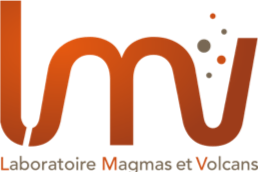 (Personne absente de la base de donnée) (Personne absente de la base de donnée) |
-
Research Topics:
Thesis Subject: Parent magmas of recent volcanism in the Bas-Vivarais (Ardèche, France): Composition, pre-eruptive conditions and ascent rate
Summary: The volcanoes of the Bas-Vivarais (Ardèche) belong to one of the most recent volcanic provinces of the Massif Central. They are characterized by phreatomagmatic eruptions preceded or followed by strombolian activity associated with lava flows. The volcanic products of this province are basanites and alkaline basalts containing numerous crustal and mantle enclaves. Currently, only a few studies have been devoted to these volcanic products and none have focused on their petrology. Thus, the objectives of this thesis are: 1) To characterize the composition, origin and pre-eruptive conditions of the parent magmas of the Bas-Vivarais volcanism. To do this, melt inclusions trapped within olivine phenocrysts of Bas-Vivarais basanites are studied (major, volatile and trace elements). Their study allows to approach the composition of the parental liquid of these lavas while freeing from the crustal and mantle contamination. 2) To understand the origin of the high CO2 contents of melt inclusions. Indeed, the melt inclusions of the Bas-Vivarais are particularly rich in CO2 (up to 4 wt%). These contents have been quantified using high pressure piston-cylinder homogenization experiments and estimated using 3D tomographies of the inclusion hosted bubble. They are among the highest CO2 contents reported on Earth. 3) Characterize the bubbles of melt inclusions and provide constraints on their formation. The bubbles of melt inclusions are particularly rich in microcrystals. They have been characterized by Raman spectrometer and Scanning Optical Microscope coupled to a focused ion beam (SEM-FIB). 4) Estimate the ascent rates of the parent magmas at the origin of the Bas-Vivarais volcanism. It is thought that these magmas, once formed at depth, rise directly to the surface without undergoing differentiation in an intermediate reservoir by having high ascent rates.
Methods:
- Study of melt inclusions trapped in olivines
- Microprobe – SEM – SEM-FIB – FTIR – Raman spectrometer
- Water and CO2 analysis by Raman spectrometry
- 3D tomography of melt inclusion bubbles by Raman spectrometry
- High pressure homogenization experiments with piston-cylinder
- Synthesis of basanitic and CO2 rich reference glasses
Supervisors: Didier Laporte – Federica Schiavi – Nicolas Cluzel
Parrain: Olivier Merle
Financing: Bourse régionale VolcAURA
-
Scientific and Administrative Responsibilities:
Organizer of the X-Pots from 2019 to 2021
Doctoral students’ representative to the Laboratory Council
Doctoral students’ representative to the OPGC Administrative Council from 2020 to 2022
-
Teaching activities:
TD – L1 Module « The Earth, 3rd planet of the solar system »
-
Publications:
Rang A:
- Raynal J.-P., Defive E., Klee N., Buxo R., Laporte D. (2023). A Tale of Old and Young Volcanoes in Monts d'Ardèche UNESCO Global Geopark (South-Eastern France). Geoconservation Research vol.6, p.207-232, 1, - DOI:10.30486/GCR.2023.1983724.1136 -
 .
.
- Buso R., Laporte D., Schiavi F., Cluzel N., Fonquernie C. (2022). High-pressure homogenization of olivine-hosted CO2-rich melt inclusions in a piston cylinder: insight into the volatile content of primary mantle melts. European Journal of Mineralogy vol.34, p.325-349, - DOI:10.5194/ejm-34-325-2022 -
 .
.
- Schiavi F., Bolfan-Casanova N., Buso R., Laumonier M., Laporte D., Medjoubi K., Venugopal S., Gomez-Ulla A., Cluzel N., Hardiagon M. (2020). Quantifying magmatic volatiles by Raman microtomography of glass inclusion-hosted bubbles. Geochemical Perspectives Letters vol.16, p.17-24, - DOI:10.7185/geochemlet.2038 -
 .
.
Rang B and C:
- Buso R., Laporte D., Schiavi F., Cluzel N., Laumonier M. (2023). CO2-rich basanitic magmas generation in continental intraplate regions : Insight from olivine-hosted melt inclusions in the Bas-Vivarais volcanic province (Ardèche, France). Goldschmidt Conference 2023, France, 9-14 juillet 2023.
- Buso R., Laporte D., Laumonier M., Cluzel N., Schiavi F., Devidal J.L., Fonquernie C. (2021). The composition of olivine-hosted melt inclusions from the Bas-Vivarais volcanic province (Ardèche, France): insight into melt generation processes. MEREMA 2nd Edition, International School on Mantle Dynamics, Sestri Levante, Italy, 25-29/10/2021.
- Buso R., Laporte D., Schiavi F., Cluzel N., Laumonier M. (2021). Very high CO2 contents (>3 wt%) in olivine-hosted magmatic inclusions from the Bas-Vivarais volcanic province (Ardèche, France): Implications for magma genesis in a continental intraplate region. AGU Fall Meeting, New Orleans LA & online everywhere, 13-17 décembre 2021.
- Buso R., Laporte D., Schiavi F., Cluzel N., Laumonier M. (2021). Very high CO2 contents (>3 wt%) in olivine-hosted magmatic inclusions from the Bas-Vivarais volcanic province (Ardèche, France): Implications for magma genesis in a continental intraplate region. Goldschmidt Conference 2021, Online, France, 4-9 juillet 2021.
- Raynal J.-P., Defive E., Klee N., Buxo R., Laporte D. (2023). A Tale of Old and Young Volcanoes in Monts d'Ardèche UNESCO Global Geopark (South-Eastern France). Geoconservation Research vol.6, p.207-232, 1, - DOI:10.30486/GCR.2023.1983724.1136 -


